You might see a beautiful orange spider in your surroundings. There are thousands of spider species, and many of them are venomous. But have you ever thought some spider bites could cause death? These spiders look beautiful and gorgeous, but they are the most dangerous spiders. Today we are going to discover 10 venomous orange spider species that are dangerous.
Here is the list:
10 Venomous Orange Spider Species
1. Brown Widow Spider
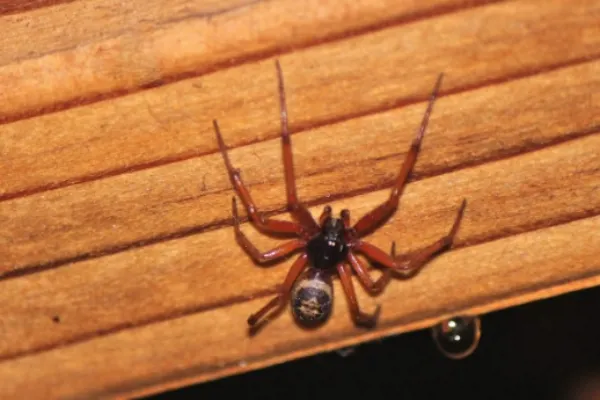
| Scientific name | Latrodectus geometricus |
| Size | 25-38 mm |
| Identification | hourglass-shaped marking on the abdomen |
| Geographical Location | Africa, South America, and Hawaii |
Latrodectus geometricus is a widow spider in the genus Latrodectus. Also known as the brown widow, grey widow, brown button spider, brown black widow, geometric button spider, or house button spider. L. geometricus has black and white patterns on its abdomen and an orange-yellow hourglass-shaped marking.
Brown widow, an invasive species, originated in South America and has since spread to various locations worldwide. Its brownish appearance ranges from tan to almost black, with ornate markings on its abdomen.
Brown widow venom is twice as powerful as black widow venom, but it is not aggressive and only injects a tiny amount when it bites. In the early 1990s, brown widow bites were linked to the deaths of two people in Madagascar.
2. Orange Baboon Tarantula
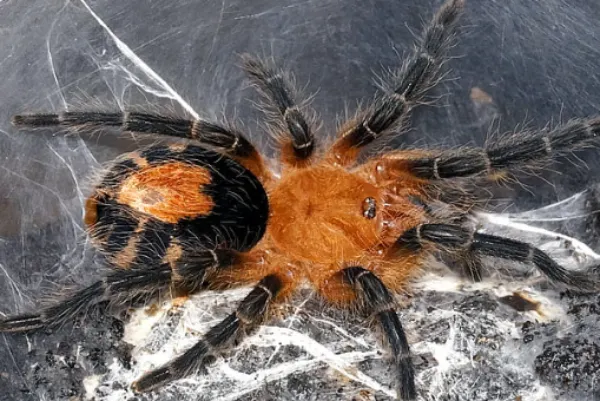
| Scientific name | Pterinochilus murinus |
| Size | 76–152 mm |
| Identification | hairy body |
| Geographical Location | Africa, Angola, Central, Eastern, and Southern Africa |
Pterinochilus murinus, also known as the orange baboon tarantula, is an old-world tarantula found in Africa, Angola, central, eastern, and southern Africa. It is known for its painful bite, which is prized for its beauty and orange color.
The species is highly defensive and should not be held, as its bite is not serious. It is more likely to inflict such a bite without presenting a typical threat display, so use caution when dealing with this species.
3. Striped Lynx Spider
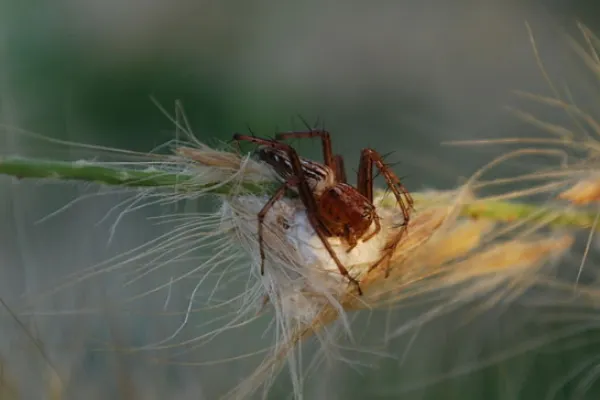
| Scientific name | Oxyopes salticus |
| Size | 4-6 mm |
| Identification | stripes on both the carapace and abdomen. |
| Geographical Location | Eastern United States, Massachusetts, and Texas |
Oxyopes salticus, also known as the striped lynx spider, This venomous orange spider has color variations between orange, cream, and brown, with stripes on both the carapace and abdomen.
Lynx spider bites cause temporary pain and swelling at the site, with no tissue damage or aftereffects. Adult specimens vary in color and have stripes on both the carapace and abdomen.
Adult females and males range in size from 5–6 mm and 4-5mm, with macrosetae covering the legs and a broad clypeus.
4. European Garden Spider
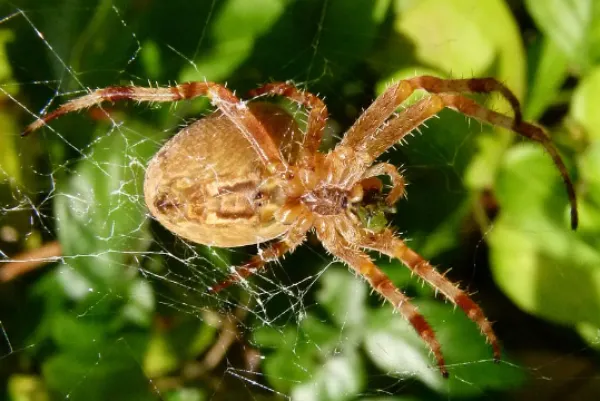
| Scientific name | Araneus diadematus |
| Size | 5.8-20 mm |
| Identification | mottled white markings on the abdomen |
| Geographical Location | Europe, and North America |
The European garden spider is also known as the orange cross spider or pumpkin spider. Its colors range from orange, pale yellow, or brown to almost black. Garden spiders possess venom that immobilizes prey but is not poisonous.
Their venom is not strong enough to pose serious health threats to humans or pets, except for individuals with distressed immune systems.
If bitten, symptoms include mild swelling, redness, and discomfort, which can last a few days. Garden spider bites are less painful than wasp or bee stings.
5. Red widow spider
| Scientific name | Latrodectus bishopi |
| Size | 38-50 mm |
| Identification | black abdomen with orange markings |
| Geographical Location | Florida |
The red widow spider, L. bishopi, is known for its red-orange cephalothorax, black abdomen with yellow rings, and vermillion-red legs. Its underside lacks the hourglass marking and has one or two small red marks.
Females are almost double the size of males. It feeds on insects and is not aggressive toward people. Death from a red widow bite is rare due to the spider’s small venom injection.
Very young children, the elderly, and people with health problems are most vulnerable to red widow spider bites.
6. Sydney funnel-web spider
| Scientific name | Atrax robustus |
| Size | 10-50 mm |
| Identification | spinning organs |
| Geographical Location | Sydney, eastern Australia, the Illawarra region, and New South Wales |
The Sydney funnel-web spider is a venomous orange spider native to eastern Australia. This venomous orange spider can cause severe illness or death in humans if left untreated. The venom contains delta-batrachotoxin, an ion channel inhibitor, making it highly toxic for humans and other primates.
The spiders typically deliver full envenomation when they bite, often striking repeatedly due to their defensiveness and large cheliceral fangs.
In severe envenomation, the time to onset of symptoms is less than one hour, with a median time of 28 minutes. Children are at particular risk of severe envenoming, with 42% of all cases being children.
7. Chilean recluse spider
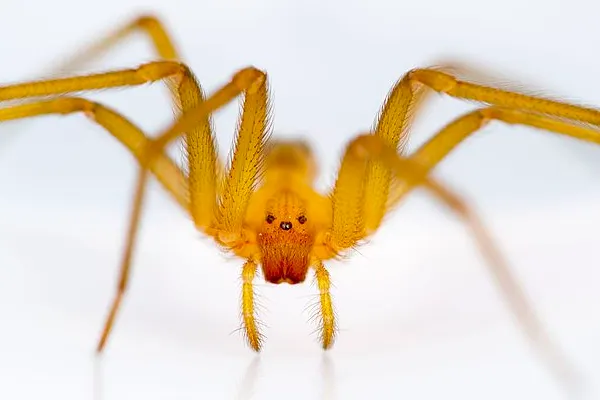
| Scientific name | Loxosceles laeta |
| Size | 8–40 mm |
| Identification | six eyes arranged in pairs |
| Geographical Location | South America, Chile, Peru, Ecuador, Argentina, Uruguay, and south and eastern Brazil |
Loxosceles laeta, a highly venomous spider from the Sicariidae family, is considered the most dangerous of recluse spiders. This venomous spider’s bites can cause serious systemic reactions, including death.
The disease ranges from minor irritations to severe skin necrosis, called cutaneous loxoscelism, and viscerocutaneous loxoscelism, which involves inner organs.
Cutaneous loxoscelism occurs from serious bites causing necrotizing skin ulcers, which may take months or years to heal, leaving deep scars.
8. Brazilian wandering spider

| Scientific name | Phoneutria |
| Size | 127-177 mm |
| Identification | strong, spiny legs |
| Geographical Location | Northern South America, and Central America |
Phoneutria, a genus of spiders in the Ctenidae family, is primarily found in northern South America and Central America.
They are poisonous to humans and are considered the deadliest spiders.
Their venom is toxic to the nervous system, causing symptoms such as salivation, an irregular heartbeat, and prolonged painful erections in men.
9. Versicolor Long-jawed Orbweaver
| Scientific name | Tetragnatha versicolor |
| Size | 4.3-13 mm |
| Identification | slim body |
| Geographical Location | North America, Alaska, Newfoundland, Cuba, Baja California, Nicaragua, and Central America |
Tetragnatha versicolor is a long-jawed orb weaver found in North America, from Alaska to Newfoundland, Cuba to Baja California, and Central America to Nicaragua.
This venomous spider has no known adverse effects on humans and is venomous, but its bite is not harmful. The spiders have a slim body that is 2 to 3 times longer than its width, with females being larger than males.
Their body color varies from pale tan to dark brown, with dark markings on the abdomen. The first, second, and fourth pairs of legs are longer than the body, and their jaws and palps are long.
10. Yellow sac spider
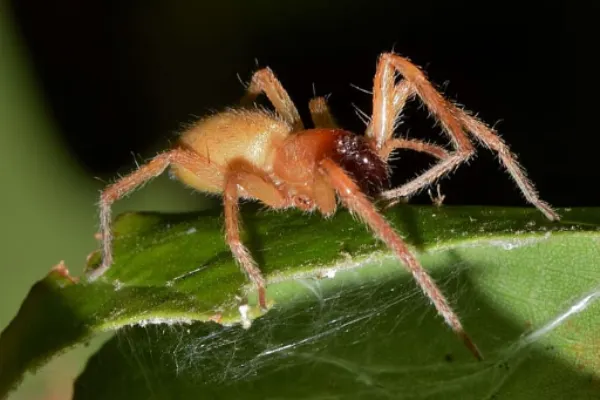
| Scientific name | Cheiracanthium |
| Size | 5-9 mm |
| Identification | travel vertically |
| Geographical Location | North, Central, and South America |
Yellow sac spiders are venomous spiders belonging to the Clubionidae family, known for their silken tubes under stones, leaves, or grass. They are found in western California, particularly in urban areas.
The spider’s venom is a cytotoxin that can produce necrotizing lesions, but such lesions occur rarely in bite victims. Yellow sac spiders are not docile creatures, and a female may bite when defending her eggs.
They are known for their vertical travel attached to a silk string, which they use to catch airborne prey and avoid attack from predators like ants, centipedes, or larger spiders. Symptoms usually resolve within 7–10 days, and bites are rarely fatal.
Who is the deadliest spider?
As we find 10 different species of spiders that are venomous, can a spider kill a human? Maybe you also want to know, and this question might come to mind. So as we research deeply, we find the deadliest orange spider, which is able to kill humans if not treated on time. The first name, which is considered to be the most dangerous, is Brown Widow Spider. It is considered more dangerous than a black widow, even in some cases of death, because of its bite. On the other hand, one more spider of the same widow clan, the red widow spider, is also dangerous to children, old people, and ill people. Its bite on these people has the potential to kill them.
Also, there are two more species of venomous orange spider whose venom has the potential to kill humans with a single bite. One is the Sydney funnel-web spider; its bite can kill you if you do not treat it on time. So next time, if you find a Sydney funnel-web spider biting, you go to the doctor or treat it before it’s too late. Don’t take it otherwise. The second one is the Brazilian wandering spider. Its toxic venom is first going to affect your nervous system, and then you can find symptoms like salivation, painful erections, or irregularities in the heartbeat, which then cause death.
So these are some of the species that are capable of killing humans but are not that toxic to humans. But remember, if you get a spider bite, it’s not going to turn you into a spider. They can cause serious illness or some other kind of damage and reaction to you, so don’t forget to consult a doctor.
Conclusion:
These are the spiders that are venomous. Some have mild poison that can cause severe pain and redness for a few days, and some have dangerous venom that can cause death, like the Chilean recluse spider and the Orange Baboon Tarantula. This is it for now; we will be back with some more informative articles. Till then, stay tuned to How It See.
FAQs:
Q1: Can a spider kill a human with a single bite?
Ans: While extremely rare, certain venomous spiders like the Brown Widow, Red Widow, Sydney funnel-web, and Brazilian wandering spider have venom that, if left untreated, can cause severe symptoms and, in rare cases, be fatal.
Q2: Are there any preventive measures to avoid spider bites?
Ans: To prevent spider bites, it’s recommended to avoid handling spiders, wear protective clothing when in spider-prone areas, and take caution when reaching into dark or hidden spaces.
Q3: Are there effective antivenoms for the bites of these venomous spiders?
Ans: Antivenoms are available for some spider bites, such as those caused by the Sydney funnel-web spider. However, not all venomous spiders have specific antivenoms, and treatment may involve managing symptoms and providing supportive care.
Q4: Why do these venomous spiders have an orange color?
Ans: The orange color in these spiders is a natural feature, varying among species for purposes such as attracting mates, camouflage, or warning potential predators.
Q5: Do all orange spiders possess venom?
Ans: No, not all orange spiders are venomous. While the spiders listed here are venomous, many orange spiders are harmless to humans.
Q6: Are venomous spiders always aggressive towards humans?
Ans: No, not all venomous spiders are aggressive. Some spiders listed, like the European Garden Spider, are not aggressive and pose minimal threat to humans.
Q7: What are the symptoms of a brown widow spider bite?
Ans: A brown widow spider bite may cause mild symptoms like pain, redness, and swelling at the bite site. However, severe reactions are rare, and fatalities are extremely uncommon.
Q8: Can one keep the orange baboon tarantula as a pet?
Ans: While some enthusiasts keep the orange baboon tarantula as a pet, it is known for its defensive behavior and a painful bite. Handling should be approached with caution.
Also Read:
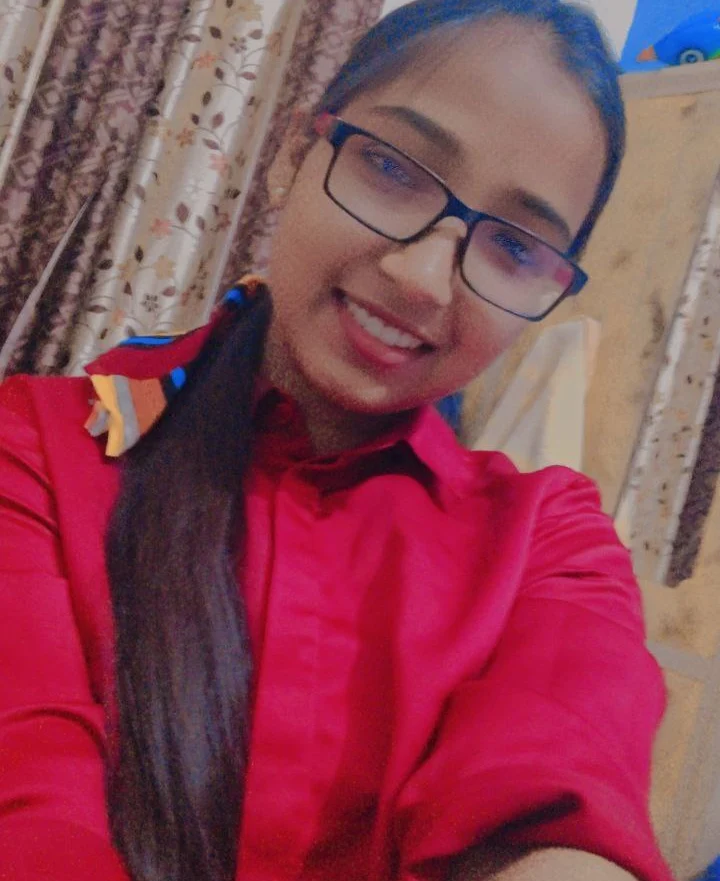
As a content writer, I like to write about different niches. I have a curiosity about nature and animals. And like to learn about them. Through my writing, I like to share my experience and knowledge with you. I hope you are enjoying it too.

